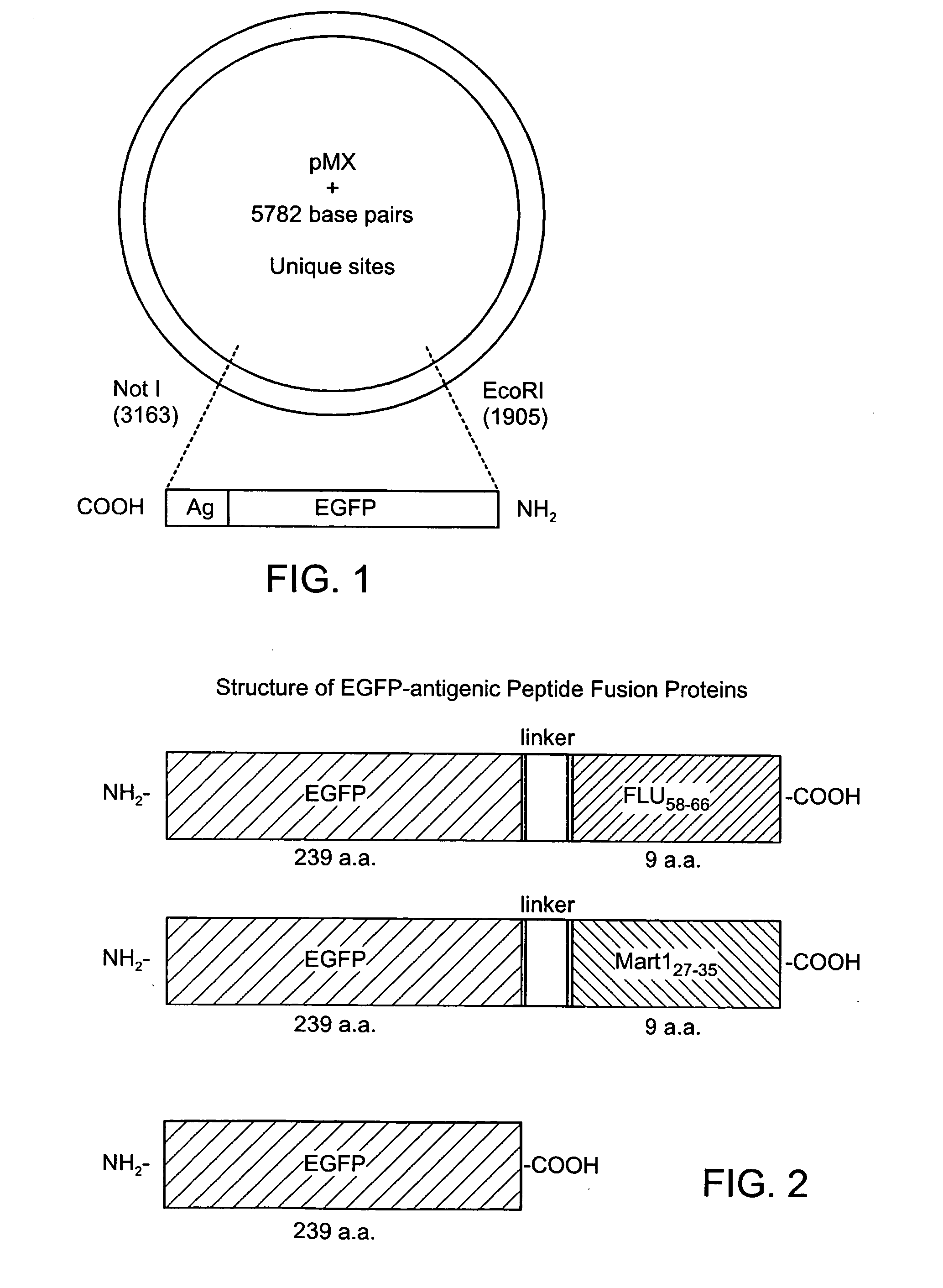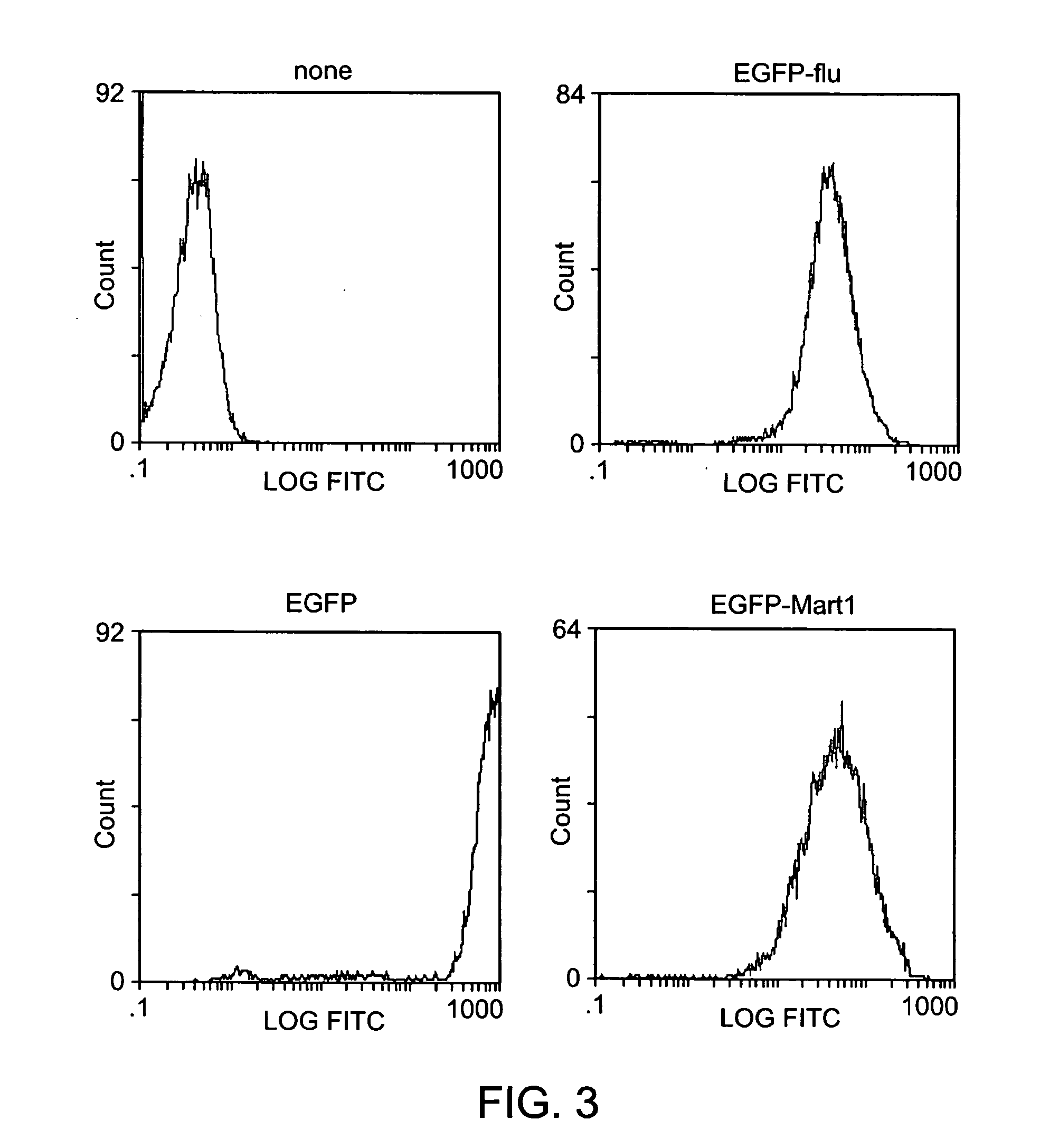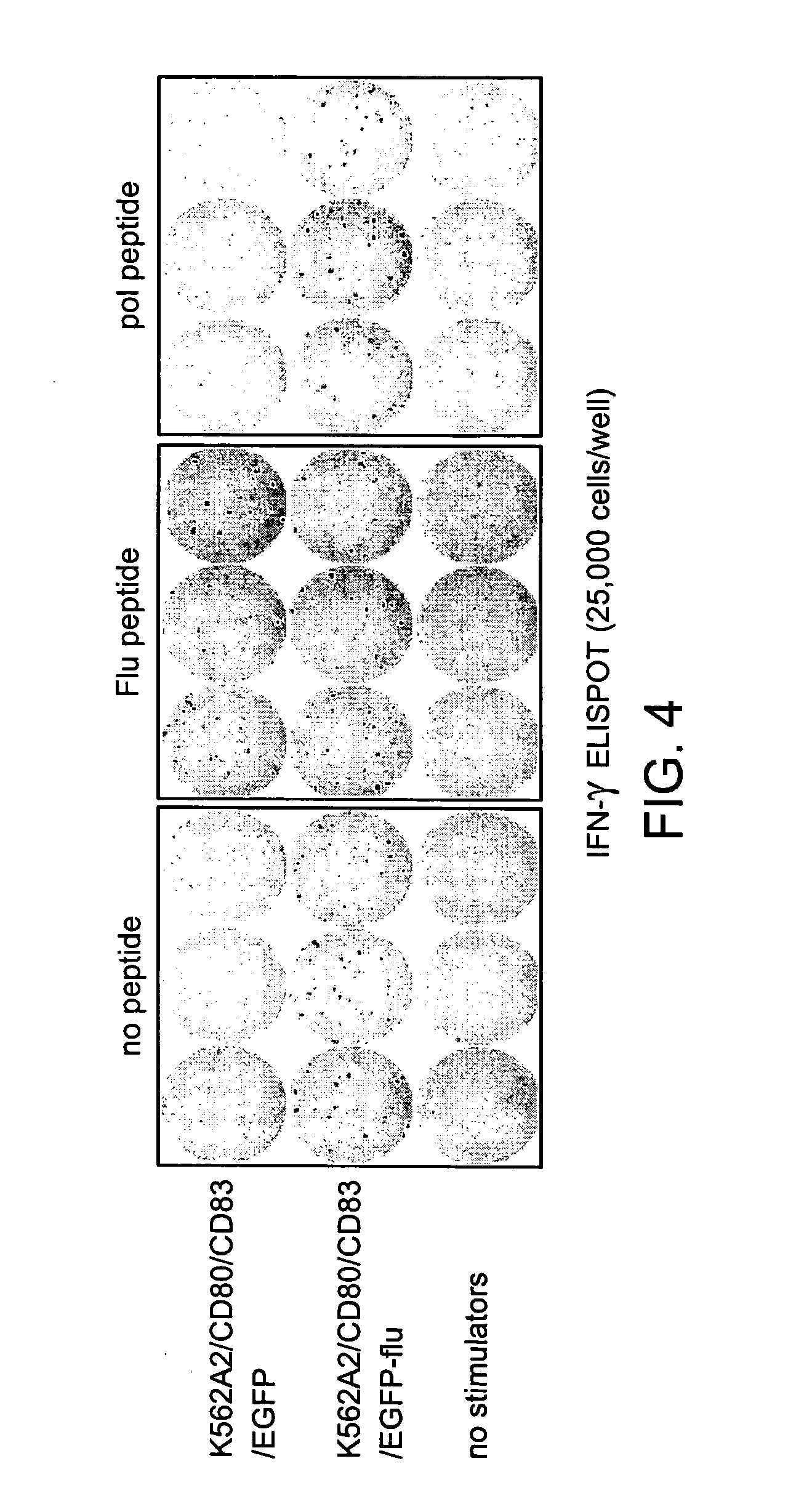Modified antigen-presenting cells
a technology of antigen-presenting cells and cells, which is applied in the field of modified antigen-presenting cells, can solve the problems of inability to elicit an appropriate inability to protect against challenge with pathogens, and inability to elicit ctl response effective against intracellular infection, etc., and achieves the effect of efficient presentation of antigens
- Summary
- Abstract
- Description
- Claims
- Application Information
AI Technical Summary
Benefits of technology
Problems solved by technology
Method used
Image
Examples
examples
Using the compositions and methods described above, the present invention provides the following example of the generation of modified antigen presenting cells of the invention, and their use in the preparation of cytotoxic T lymphocyte cell lines.
Characterization of K562
The human erythroleukemia tumor cell line, K562, was characterized for cytokine production and cell surface phenotype. Cytokine expression profile (Table 1) was determined by protein ELISA assays per manufacturer's recommendations (R&D Systems for all cytokines except IL-7, Cell Sciences). K562 was also analyzed for the surface expression by FACS Beckman Coulter). To generate the molecularly engineered APC, MEA1, we transduced the genes encoding for HLA-A*0201, CD80 and CD83 using a retroviral vector. Cell lines were sorted to purity (FIG. 1) by multiple rounds of FACS staining and cell sorting using the EPICs Elite and Altra 2000 cell sorters (Beckman Coulter).
As shown in Tables 7 and 8, the K536 cell line e...
PUM
| Property | Measurement | Unit |
|---|---|---|
| Green Fluorescent | aaaaa | aaaaa |
| cell surface protein | aaaaa | aaaaa |
| nucleic acid | aaaaa | aaaaa |
Abstract
Description
Claims
Application Information
 Login to View More
Login to View More - R&D
- Intellectual Property
- Life Sciences
- Materials
- Tech Scout
- Unparalleled Data Quality
- Higher Quality Content
- 60% Fewer Hallucinations
Browse by: Latest US Patents, China's latest patents, Technical Efficacy Thesaurus, Application Domain, Technology Topic, Popular Technical Reports.
© 2025 PatSnap. All rights reserved.Legal|Privacy policy|Modern Slavery Act Transparency Statement|Sitemap|About US| Contact US: help@patsnap.com



